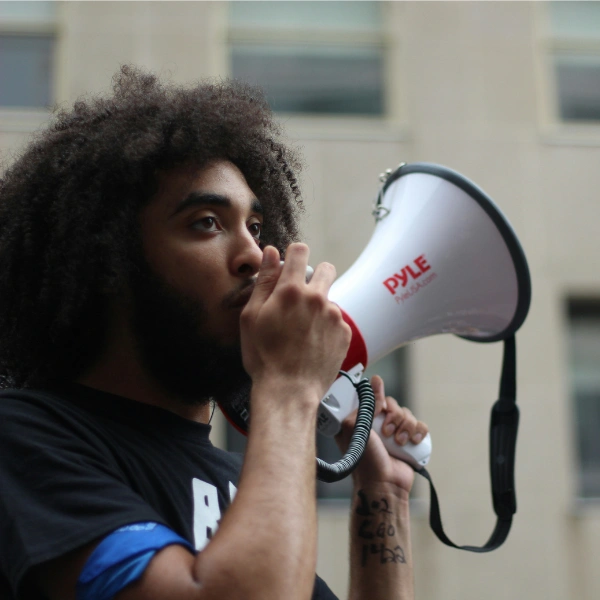UnTangled with Maiya Holliday: What Does AI For Social Impact Look Like?


I have a lot of conversations about AI these days, and they often fall into two categories: excitement about new possibilities or worry about what the future holds. When I sat down with my friend and fellow B Corp CEO, Maiya Holliday of Mangrove Web, for an episode of UnTangled, the conversation settled into something more grounded. We talked about what AI actually means for mission-driven organizations, where the opportunities are, and how humans remain central to the work.
AI Is Reducing Busywork, Not Replacing Expertise
Maiya’s perspective comes from years of working at the intersection of design, development, and social impact organizations. Her team has already integrated AI tools into their development workflow, and what she shared was refreshingly practical. AI is not replacing experienced developers. It is reducing the time they spend on repetitive tasks so they can focus on the strategic problems that require human expertise.
“AI is helping us eliminate repetitive tasks so we can focus on the strategic work humans are actually good at.”
For nonprofits operating with limited resources, this shift has real value. AI can clear away the unnecessary friction that drains capacity, allowing people to spend more time on the work that truly advances the mission.
Rethinking How Content Gets Created
Nonprofits produce a tremendous amount of content that must be written, edited, structured, and organized. It is one of the most time-consuming parts of maintaining a digital presence. Maiya’s team is creating tools to help streamline this process by structuring content in ways that reflect brand, accessibility standards, and the realities of web development. This helps ensure content is both human-friendly and machine-readable, which matters more every day.
“Content has always been the Achilles’ heel of website projects. AI can finally help streamline the parts that used to slow everything down.”
The goal is not to produce more content. It is to produce clearer content that is easier to manage, adapt, and use across channels.
Documenting Institutional Knowledge Matters
One of the strongest themes in our conversation was the importance of documenting what your organization knows. AI can help analyze, summarize, and retrieve information, but only if the information exists in a structured and accessible format. Many organizations rely on individual staff members to hold essential knowledge about programs, decisions, and processes. That makes the organization fragile rather than resilient.
“Document what you know. If the knowledge lives only in people’s heads, AI can’t support you.”
Leaders can strengthen their teams by capturing information in simple, consistent ways. This supports better collaboration, smoother onboarding, and more effective use of AI.
Start Small and Build Confidence
Maiya offered a simple starting point for organizations exploring AI: identify repetitive tasks across the team and evaluate them based on time required, strategic importance, and potential impact if automated. Begin with one low-risk, high-value task. Small experiments help teams learn what is possible without creating overwhelm or pressure.
This approach builds confidence and keeps the focus on thoughtful implementation rather than chasing trends or reacting to fear.
AI Works Best When Organizations Are Clear
Throughout the conversation, one message kept resurfacing. AI is not a shortcut for strategy. It amplifies what already exists. If processes are unclear or systems are scattered, AI will highlight the confusion. If goals, values, and workflows are clear, AI can strengthen communication and improve efficiency.
“You need clarity before you start bringing AI into your work. The clearer you are, the more useful it becomes.”
Clarity is not only a prerequisite for effective AI use. It is also one of the most important components of organizational health.
Leadership Shapes the Way Forward
Leaders do not need to be AI experts. They do need to cultivate a culture where experimentation is safe, collaboration is encouraged, and values guide decision-making. When teams are supported in learning and openly sharing what they discover, organizations can adapt without losing sight of their mission.
This is the kind of leadership that strengthens resilience and ensures technology serves people, not the other way around.
What AI for Social Impact Actually Means
AI for social impact is not about replacing human judgment or creativity. It is about using tools that reduce busywork, support clarity, and make mission-driven work more sustainable. It involves aligning technology choices with values, building accessible systems, and keeping people at the center of every decision.
When organizations approach AI with clarity and intention, it becomes a practical resource for strengthening impact rather than a source of confusion or anxiety.
Watch the full episode here:
Curious about how to gain efficiencies in your org using AI tools? Give me a shout!
Thanks! You’ll hear back within 48 business hours
In the meantime, why not check out our latest case study?

Whether you need help with a project, want to learn more about us, or just want to say hi, you’ve come to the right place.



